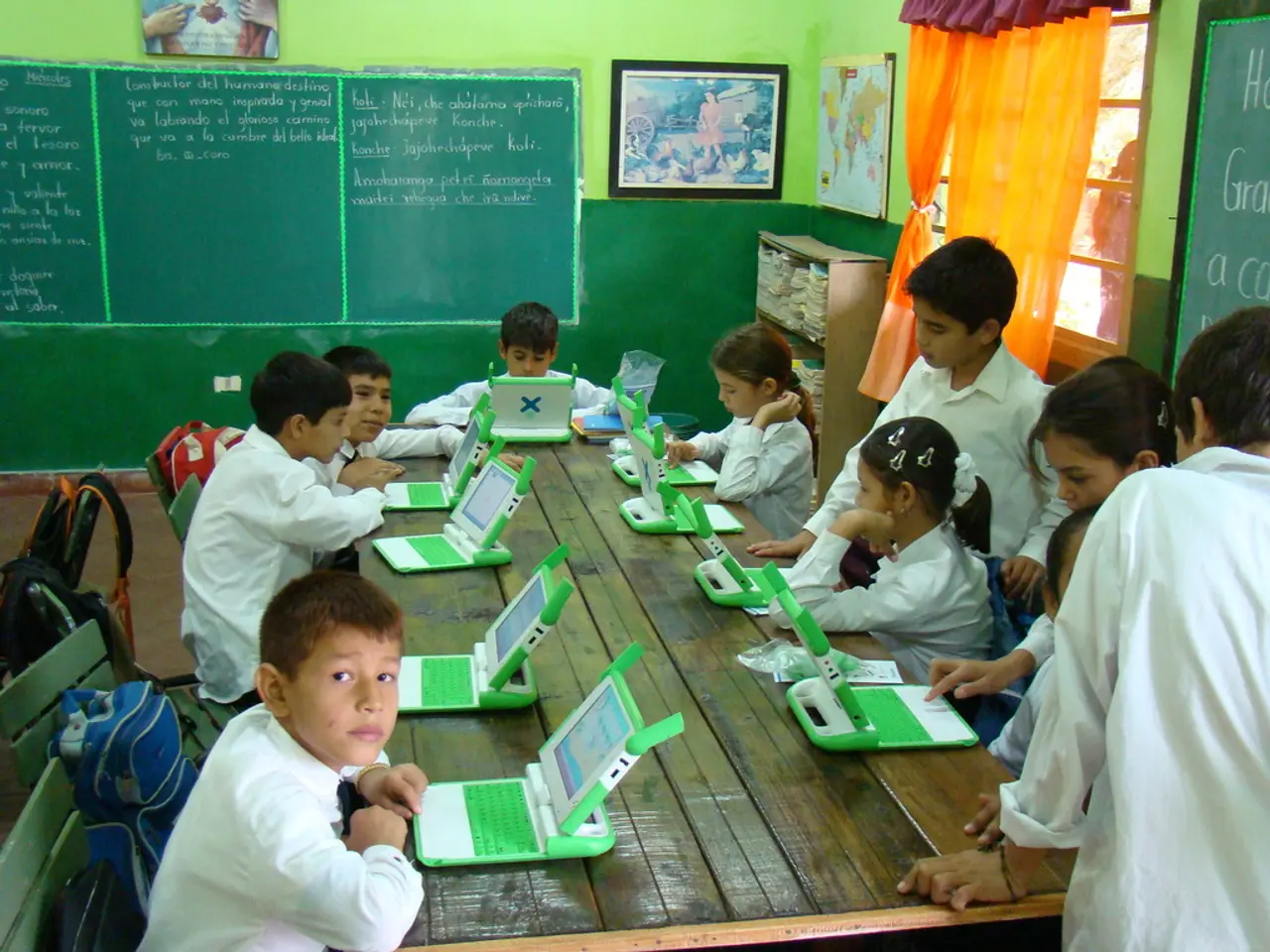AI Surveillance in Schools: A Double-Edged Sword
School monitoring leads to an unforeseen crisis for a mother, as a harmless joke escalates into a serious predicament.
In the realm of American education, the use of Artificial Intelligence (AI) surveillance software is a topic of intense debate. On one hand, proponents argue that these tools, such as Gaggle and Lightspeed Alert, can be highly effective in detecting early warning signs of bullying, self-harm, violence, or abuse, potentially saving lives [1][2][3][4]. On the other hand, critics contend that the technology can be overly intrusive, leading to false alarms, over-criminalization of students, privacy concerns, and traumatic consequences [1][2][3][4].
Effectiveness
These AI systems monitor students' online activities on school accounts and devices, scanning conversations and content to immediately alert school officials and law enforcement about potential threats. For instance, in large districts like Florida's Polk County Schools, AI surveillance has generated several hundred alerts over a few years, leading to interventions including mental health evaluations and hospitalizations under state laws meant to protect students at risk [2][3][4].
Proponents argue that these tools enable understaffed schools to be proactive rather than purely punitive, identifying problems before they escalate [2][3].
Controversies and Criticisms
However, critics caution that the technology can criminalize students for careless or joking comments. Teenagers face harsher consequences than adults for similar online behavior, with cases of arrests or involuntary mental health hospitalizations even in cases of false alarms or misunderstandings [1][3][4].
The involvement of law enforcement in responses to mental health crises has been traumatic for many students, with advocates highlighting that involuntary evaluations often harm rather than help young people’s mental health [2][3][4].
Privacy advocates warn about routine law enforcement access to students’ online activities, including monitoring that extends into their homes, raising serious ethical and civil liberties concerns [1].
Data on the actual effectiveness and false alarm rates of these AI systems are not publicly available, as companies closely guard this information and few schools or districts systematically publish evaluations [2][3][4].
Best Practices Suggested
Experts recommend a cautious, evidence-based rollout of AI surveillance systems. This includes piloting the technology in controlled settings, independent audits, transparency on accuracy and fairness, and continuous monitoring over extended periods before full adoption. Such an approach can help ensure safety benefits while minimizing harms and protecting student rights [5].
Recent Developments
Recent events have further highlighted the controversies surrounding AI surveillance in schools. A group of student journalists and artists at Lawrence High School filed a lawsuit against the school system last week, alleging Gaggle subjected them to unconstitutional surveillance. In Tennessee, a 13-year-old girl was arrested for making an offensive joke while chatting online with her classmates.
Alexa Manganiotis, a 16-year-old girl, was startled by the quick response of surveillance software at her school, Dreyfoos School of the Arts. After being interrogated, strip-searched, and spending the night in a jail cell, she was ordered eight weeks of house arrest, a psychological evaluation, and 20 days at an alternative school [1].
In conclusion, AI surveillance in U.S. schools shows promise for early threat detection and potential life-saving interventions, but it remains deeply controversial due to risks of false alarms, harsh disciplinary actions, privacy violations, and psychological harm to students. Greater transparency, oversight, and balanced implementation are crucial to addressing these challenges [1][2][3][4][5].
- Advocates for education-and-self-development argue that AI surveillance in schools can aid proactive intervention, identifying potential threats before they escalate, which could significantly improve the health and well-being of students [2][3].
- On the other hand, the arts community, along with privacy advocates, express concerns about the role of technology in education, particularly AI surveillance, due to its potential to infringe upon general-news worthy civil liberties and privacy rights [1].
- In the ever-evolving political landscape, the adoption and regulation of AI surveillance in schools is a hot topic that continues to spark debate, with recent developments in lawsuits and arrests highlighting the necessity for fair and balanced implementation in both health and education [1][5].




